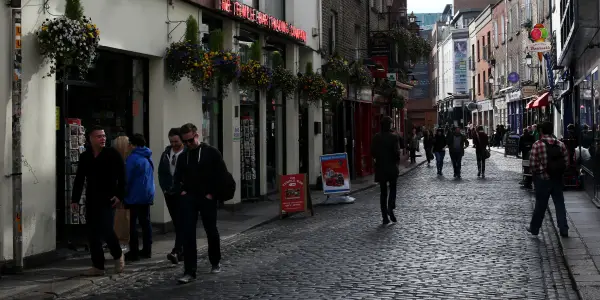Homeless campaigners have demanded immediate action after Census 2016 found almost 200,000 houses and apartments lying empty across the country.
The startling 10 per cent vacancy rate sparked calls for owners to be forced to sell properties to the state if they leave them unused and unoccupied.
The Peter McVerry Trust said the figure – not counting holiday homes – was unacceptably high despite the unprecedented housing and homeless emergency.
“The level of vacant housing units underlines just how dysfunctional our housing system has become,” spokesman Francis Doherty said.
“In Dublin, we have around 4,000 individuals in homelessness yet the figures out today show over 36,000 vacant units across the region.”
Census 2016 recorded Ireland’s population growing to 4.75 million in the five years from 2011.
More than 6,000 parents and children are in emergency accommodation for the homeless and up to 130,000 people are on social housing waiting lists across the country.
The report showed there are 2,022,895 houses and apartments, including temporary and communal dwellings nationwide but 198,358 we re lying vacant on census night, Sunday April 24.
Another 61,204 holiday homes were lying empty and 44,868 properties which people were temporarily absent from.
The McVerry Trust called for the Government and councils to force through compulsory purchase orders in order to take unused buildings out of private ownership. It also said buildings should be under real-time monitoring to see whether they are being occupied regularly.
“We should not tolerate a situation where there are thousands of homes lying idle, particularly during a housing and homeless emergency,” Mr Doherty said.
Mike Allen, Focus Ireland director of advocacy, said: “There is a real urgent question of whether these empty homes can be brought back into use for people who are currently homeless.”
The homeless charity called for councils to investigate why homes are lying empty and stated that 2% of the vacant units could house Ireland’s homeless.
“Clearly many of these homes are empty for good reason and cannot be made available for other households. But even accessing a small proportion of them would make a big difference,” Mr Allen said.
The preliminary figures from Census 2016 also revealed the scourge of emigration still hitting some parts of the country badly, alongside the movement of people within Ireland.
Donegal is the worst affected with its population down by 2,382, or 1.5%, between 2011 and 2016.
Other areas bearing the brunt were Mayo, Sligo, Co Galway, Limerick and South Dublin – which also recorded emigration.
Overall the population grew by 169,724 since 2011, an average of almost 34,000 a year, the report from the Central Statistics Office (CSO) showed.
The fastest-growing areas were Greater Dublin, in particular in the Fingal region covering Swords, Blanchardstown and other northern and north western suburbs of the capital, which grew by more than 8% or 22,223 since 2011.
The high birth rate drove the increases here and on the south side, the CSO said.
Other population booms hit the commuter belts of Meath, Kildare and Laois and the cities of Cork and Galway, South Dublin and Laois.
The CSO estimated that net migration across Ireland was -28,558, but it warned the number should be treated with caution until further analysis is done on the number of visitors to Ireland on Census night and Irish residents abroad at the time.
Alongside all the numbers of people and houses the data suggested Ireland should have more politicians.
The CSO said there are 30,114 people for each of the 158 TDs in the Dail – the constitutional limit is 30,000 and 25 constituencies are breaching that threshold.
Census 2016’s preliminary results also revealed a continued fall in the sex ratio trend as there are now 978 men for every 1,000 women.
On housing, Carlow experienced the largest fall in the number of vacant dwellings from 3,202 in 2011 to 2,417 in 2016.
Leitrim, which had the highest rate of vacancies in 2011, saw its level fall by 3.7% in the last five years.
Donegal, which had a property vacancy rate of 28.4% in 2011, had a fall of less than 1% over the same period, although a large proportion of these will be holiday homes.
The CSO said its enumerators classed homes as “vacant dwellings” after several visits and if there were no signs of life, no furniture, no parked cars, if junk mail was accumulating, an overgrown garden and so on.
